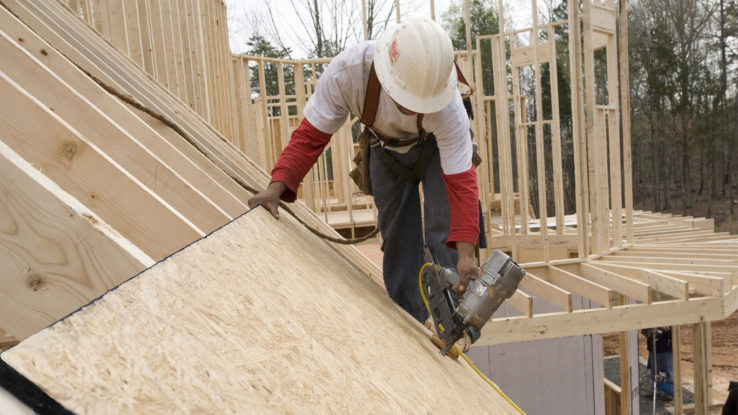If you live in an especially rainy or humid climate consider using plywood sheathing instead of osb.
Roof sheathing getting wet.
Mold growth on attic roof sheathing is a common issue in cool climates such as the pacific northwest.
Once your house is under roof and there s little chance of the lumber getting wet you may want to do some first aid and.
What makes this product really amazing is its resistance to water.
I used 5 8 tongue and groove nailed for the roof.
The osb and in fact any wood panels must be allowed to dry completely depending on how wet the panels are this could be a few days before any roofing material is applied to avoid trapping moisture under the roof material that could cause edge swell and buckling.
In the vast majority of cases the mold growth is caused by condensation.
Here are the four main ways you get wet framing lumber to dry.
The water repellent prevented swelling of plywood and untreated osb.
If you ve ever built or had a house built in a wet area of the country you know that traditional plywood or osb can swell when it gets wet.
Plywood can even delaminate and literally come apart at the seams.
Use a dehumidifier 4.
Mold on attic sheathing.
This occurs when the temperature of the sheathing drops below the dew point creating a thin layer of moisture on the substrate.
As the other comment said with normal exterior rated plywood one wetting assuming your attic is well enough ventilated to dry the wood out in a few days is probably not going to cause much damage to the sheathing.
The ventilation is needed not only for moisture control but also to reduce by 20 40 high summertime attic and roof sheathing temperatures which are bad for roof trusses rafters and the roof sheathing as well as the shingles and underlying waterproofing membrane which can reach 160 180 degrees over an unventilated attic.
It is never a good idea to install a roof over wet plywood or any type of roof sheathing.

